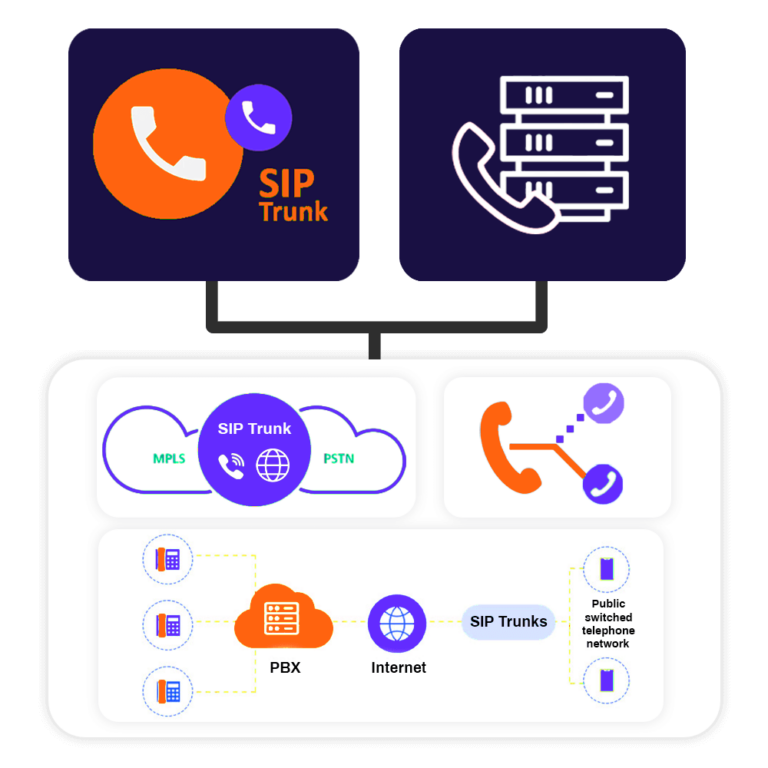Seamless Connectivity with SIP Trunking Services
Say goodbye to the limitations of traditional phone line connections and embrace the versatility of SIP trunking services. SIP trunking offers businesses a modern solution for establishing seamless connectivity to the Public Switched Telephone Network (PSTN) through their internet connection. Unlike traditional trunking methods that required the purchase of fixed bundles of phone lines, SIP trunking provides flexibility and scalability, allowing businesses to add or remove channels as needed without unnecessary costs or waste.
One of the standout features of SIP trunking is its scalability. Whether your business is experiencing growth or a shift in communication needs, SIP trunking grows with you, ensuring that you always have the right amount of capacity to handle your call volume efficiently. No more purchasing entire trunks of phone lines when you only need a few additional channels – with SIP trunking, you can scale your communication infrastructure painlessly and cost-effectively.
Moreover, SIP trunking consolidates various communication services into a single line, including voice, video, and data. This convergence streamlines your network infrastructure, simplifying management and reducing costs associated with maintaining separate services. With dynamic bandwidth allocation, SIP trunking ensures that essential resources are available for basic web use while maintaining a consistent call volume and quality, enhancing overall communication efficiency.
In essence, SIP trunking offers businesses a seamless and efficient way to connect to the PSTN and manage their communication needs. With its scalability, consolidation of services, and dynamic bandwidth allocation, SIP trunking is the ideal solution for businesses looking to streamline their communication infrastructure and adapt to changing needs with ease.

What is a SIP Trunk?
SIP Trunking (Session Initiation Protocol) is the virtual equivalent of a traditional business phone line – a SIP trunk is a virtual connection to the Public Switched Telephone Network (PSTN), utilizing your internet connection. The term “trunking” itself dates back to the original days of telephone service. A trunk was a shared communication path for a large number of telephone users. SIP itself is one of the specific protocols that enable VoIP services to work. While traditional phones use physical lines and circuits to connect to the PSTN, a SIP trunk replaces the physical connections with virtual connections over your existing IP networks. Because information is transmitted through the internet and not landline telephone lines, SIP integrates voice, video data and internet services into one single line.
With the invention of VoIP and PBX, voice communications were no longer restricted to traditional circuits and landline phones. Instead through SIP, a signaling language designed to carry data like voice, video and instant messaging, we can utilize the internet to highly cut down on the cost and rigidity of older phone systems.
All SIP calls are local calls and you won’t even need a phone line. SIP Services are offered by most business VoIP providers for both small and large application, and offer a cost effective way for small businesses to maintain the professional presence – and for large companies to maintain a local presence.


Unlocking Scalability and Efficiency
SIP trunking replaces old school styled connections that were just way more limited than IP networks. Adding phone lines required the purchase of a new trunk that included at minimum, 24 additional lines. You may only needed just one additional line, but had to purchase an entire trunk – now you spent more money and have 23 useless lines. One of SIP Trunking’s strongest points is its scalability, it will grow painless with your business, or even shrink if your needs change. Because SIP trunking combines video, data and voice all into one single line, your local, long distance, broadband internet service, and even video calls are all handled through one network. With dynamic bandwidth allocation, you can ensure the necessary resources are available for basic web use, while maintaining a consistent call volume and quality.

Uninterrupted Connectivity
Service outages are a thing of the past with SIP trunking. If one location shuts down temporarily, SIP trunks will automatically reroute calls to any other locations and extensions to at least partially restore services. If there is an unexpected power outage, calls can be rerouted to a separate satellite office. Companies with an international presence, or even considering outsourcing, can take advantage of this benefit. The flexibility of SIP trunking allows you to spread staff across the country or even the world. Whereas PRI trunking can fail in adverse weather, SIP services ensures you will stay connected and automatically reroutes calls as necessary. As an internet-based replacement for traditional phone service, SIP is a central part of how VoIP works and allows for a more robust, and flexible unified communications system.

